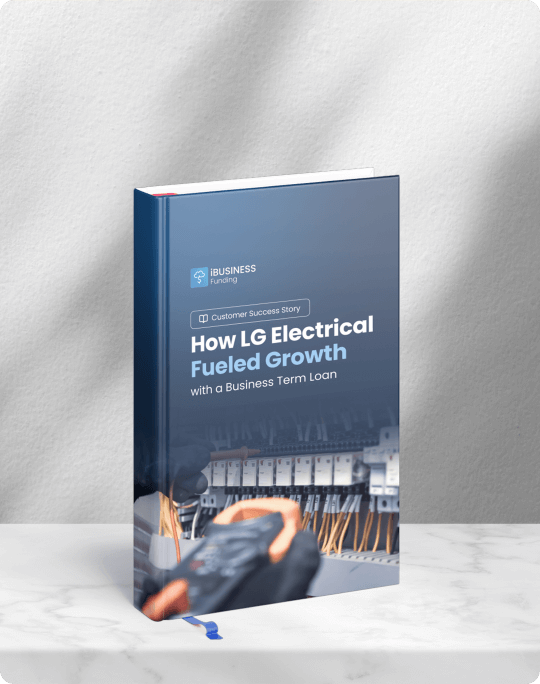
The New Lending Playbook: How Financial Institutions Can Win Big With SMBs
Small business momentum continues to surge in 2025, with applications for new entities growing and owner optimism staying above 2024 levels despite tariff and macroeconomics volatility. In fact, in the second quarter of 2025, banks approved over $10 billion in gross funding for small businesses, representing a 45% jump compared to a year ago.
While small businesses continue to be an economic force in the U.S., ongoing challenges with lending processes threaten to undermine future growth. The lending process has been broken for a while, mainly due to long application procedures, unclear next steps, limited transparency into decisioning, and other hurdles that present issues for small businesses. The process feels even slower in the post-PPP world (Paycheck Protection Program), with many business owners reporting that they’re delaying getting the capital they need to tackle opportunities and grow their businesses.
SMBs Have Evolved
Small businesses have evolved far beyond the quiet shops that once lined main streets across America. Today, they’re often digital-first companies, run by ambitious entrepreneurs focused on higher growth and international scale. Collectively, small businesses are estimated to spend nearly $1.5 trillion on IT solutions annually. Technology laggards no more, they’re staying at the forefront of innovation. According to a J.P. Morgan Chase survey, 80% of owners expect to deploy or have already deployed AI into their operations.
Lenders Must Meet Changing Demand
Even with all the technology green lights furthering small businesses over the past decade, they're still forced to navigate a lending environment that seems trapped in the analog era. Between outdated interfaces, manual processes, fragmented tooling, and long turnaround times, borrowers are growing increasingly frustrated. This can ultimately undermine business owners' confidence in their ability to secure the necessary capital needed to fuel growth amid rising costs for goods, services, and talent. Meanwhile, credit uncertainty and rising compliance requirements are also putting lenders on edge, leading to even more burdensome reviews.
How AI Keeps Business Moving
When applying for loans, small business owners expect the same digital experience they provide to their customers. AI is helping financial institutions to deliver that speed, clarity, and transparency. New AI agents, like Lendsey from iBusiness Funding, automates some of the most tedious steps in the submission, review, and approval processes to accelerate lending. With an underlying multi-agent AI architecture that updates in real time to reflect new regulatory requirements, lenders can easily verify ongoing compliance.
The Future Is (Securely) Automated
Given recent changes to the Small Business Administration’s 7(a) program, financial institutions have an opportunity to modernize their IT landscape and invest in new AI capabilities to comply with new SOP 50 10 8 requirements as well as give their customers the seamless, secure, and speedy experiences they’re demanding.
With multi-agent AI systems, teams aren’t just investing in another technology solution—they’re investing in a digital team that works alongside human lending specialists to autonomously handle administrative tasks such as assessing risk, answering applicant questions, hunting down documents, and managing the many other functions that keep lending teams bogged down and struggling to quickly approve business owners for the capital they need.
But financial institutions can't sacrifice speed for security. Key design features, such as a closed, fully private ecosystem, prevent risk exposure from third-party data and tools. Ultimately, every action the multi-agent AI systems take must be aligned with compliance requirements and recorded for audit purposes.
“Small business owners are clamoring for a more seamless and automated lending process that multi-agent AI systems provide, but that doesn’t discount the need to provide the technology in a secure way,” said Justin Levy, CEO of iBusiness Funding. “With real-time updating to reflect the dynamic compliance environment, along with key security features built into the underlying architecture, lenders can safely scale multi-agent AI systems to capture the immense opportunity in SMB lending.”
Conclusion
The move to multi-agent AI systems isn’t just a technology overhaul—it’s a complete reimagining of how lenders run their operations and connect with clients. It’s how they’ll stay competitive moving forward. Those who take the time to securely infuse AI into their core will lead the pack. This is especially true in the booming world of small business financing, where the right tools paired with trustworthy partners can create outstanding results for both lenders and borrowers.
Curious to see what LenderAI and Lendsey can do for your lending operations? Visit go-ibf.com/contactus to schedule your free demo.











.png)
.png)
.png)



.svg)